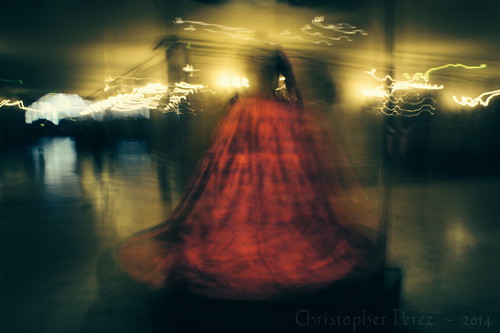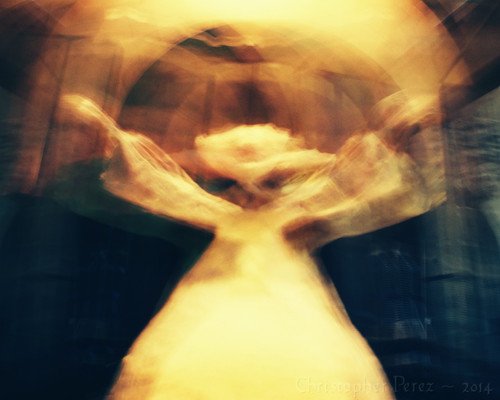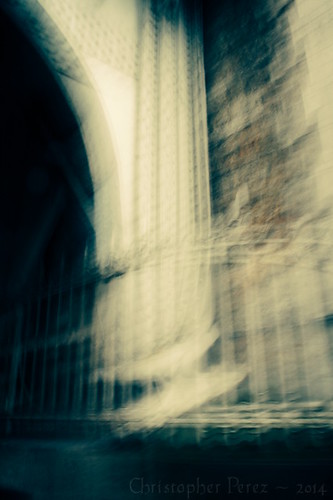This blog entry will provide a few answers to the questions posed in two recent contests that I ran, where readers were invited to tell me what lens made which photograph.
Needless to say, no one was able to determine anything about the lenses that made each image. That is my point. It is impossible to say what lens took what, except in a few, rare exceptions where lens properties are unique. I'm thinking of portrait lenses like the Petzval, Eastman Kodak, or Wollensak series of very large format film lenses.
I wanted to turn the common question questions of "which lens is best...?" inside out and try to lead people to consider what they really need in a lens by looking at end results. Common questions asked differently free me to look beyond "tests" which more often than not prove lenses are sharper than current generation digital sensors.

It comes down to asking two simple, short questions -
If we want a "sharp" lens, just about any lens will do. Cheap kit lenses are typically sharper than the sensor. I've used my NEX5 at 200ISO with an off-center Sony 18-55mm kit lens (yes, Sony seems to have trouble manufacturing lenses) at f/5.6 or f/8 and the results are as sharp from edge to edge as anything I've ever made using "better" equipment.
If we want a lens that separates the foreground from the background, just about any large aperture lens made for 35mm film camera since 1960 will do nicely. I have a Nikon 50mm f/1.4 pre-Ai that is stunningly sharp from wide open.
If we want to impress strangers with displays of "expensive taste" there are plenty of very expensive cameras and lenses that serve that purpose.

Some of the on-line camera forums lit up when Sony introduced their A7-series and a rather expensive 35mm f/2.8 Zeiss branded lens. People went to great lengths to show it is a stunning optic. Well, it had better be, because I have a Nikon 35mm f/2 Ai where measurable optical performance is every bit the equal of the new Wonder Lens at a tenth the cost.
From the Beer Contest, I asked if people could tell which lens made which image. Bonus points were to be given to those who determined the apertures of the lenses, with half a bottle of beer offered to anyone who could correctly guess who made the lenses.
I own many old manual focus lenses. When available inexpensively, they tend to follow me home. It's from this "collection" that I took two lenses. One was a 50mm and the other was an 85mm. The apertures or makers? I'll leave that for readers to ponder.

From the second contest, I broadened the number of lenses to include modern as well as truly old optics. I thought it might be interesting to mix multi-coated zoom AF lenses with old single coated or non-coated manual focus. The only thing I will say is that it should be obvious which lens is the late 1800's Paris flea market dumped in the middle of a table of junk Petzval formula lens. It's an unmarked 15cm f/3 taking lens that can only be shot wide open. As you look at the images taken using that lens, remember that it's purpose is to cover a 4x5inch or 5x7inch sheet of film. At those dimensions images are surprisingly sharp. On full frame DSLRs it's an interesting lens that gives pronounced "portrait" effects, just like it was designed to do.
You might ask why, in the end, I won't reveal the names, focal lengths, and apertures of the other lenses. To me these sample comparisons prove that the makers, focal lengths, and apertures don't matter.
What matters is the brain and heart of the person standing behind the camera.
Needless to say, no one was able to determine anything about the lenses that made each image. That is my point. It is impossible to say what lens took what, except in a few, rare exceptions where lens properties are unique. I'm thinking of portrait lenses like the Petzval, Eastman Kodak, or Wollensak series of very large format film lenses.
I wanted to turn the common question questions of "which lens is best...?" inside out and try to lead people to consider what they really need in a lens by looking at end results. Common questions asked differently free me to look beyond "tests" which more often than not prove lenses are sharper than current generation digital sensors.

It comes down to asking two simple, short questions -
- Does the lens fit my need?
- Can I afford it?
If we want a "sharp" lens, just about any lens will do. Cheap kit lenses are typically sharper than the sensor. I've used my NEX5 at 200ISO with an off-center Sony 18-55mm kit lens (yes, Sony seems to have trouble manufacturing lenses) at f/5.6 or f/8 and the results are as sharp from edge to edge as anything I've ever made using "better" equipment.
If we want a lens that separates the foreground from the background, just about any large aperture lens made for 35mm film camera since 1960 will do nicely. I have a Nikon 50mm f/1.4 pre-Ai that is stunningly sharp from wide open.
If we want to impress strangers with displays of "expensive taste" there are plenty of very expensive cameras and lenses that serve that purpose.

Some of the on-line camera forums lit up when Sony introduced their A7-series and a rather expensive 35mm f/2.8 Zeiss branded lens. People went to great lengths to show it is a stunning optic. Well, it had better be, because I have a Nikon 35mm f/2 Ai where measurable optical performance is every bit the equal of the new Wonder Lens at a tenth the cost.
From the Beer Contest, I asked if people could tell which lens made which image. Bonus points were to be given to those who determined the apertures of the lenses, with half a bottle of beer offered to anyone who could correctly guess who made the lenses.
I own many old manual focus lenses. When available inexpensively, they tend to follow me home. It's from this "collection" that I took two lenses. One was a 50mm and the other was an 85mm. The apertures or makers? I'll leave that for readers to ponder.

From the second contest, I broadened the number of lenses to include modern as well as truly old optics. I thought it might be interesting to mix multi-coated zoom AF lenses with old single coated or non-coated manual focus. The only thing I will say is that it should be obvious which lens is the late 1800's Paris flea market dumped in the middle of a table of junk Petzval formula lens. It's an unmarked 15cm f/3 taking lens that can only be shot wide open. As you look at the images taken using that lens, remember that it's purpose is to cover a 4x5inch or 5x7inch sheet of film. At those dimensions images are surprisingly sharp. On full frame DSLRs it's an interesting lens that gives pronounced "portrait" effects, just like it was designed to do.
You might ask why, in the end, I won't reveal the names, focal lengths, and apertures of the other lenses. To me these sample comparisons prove that the makers, focal lengths, and apertures don't matter.
What matters is the brain and heart of the person standing behind the camera.
6 comments:
It seems to me that with today's digital tools, photographers can scrutinize their images to a degree that would have required a microscope, enlargements beyond 16x20, or other rarities/specialized equipment in the silver halide era.
It's made understanding what is "better enough" very difficult, hasn't it!
Philip, I think you're right. From this I think of two things.
The first is just how good some of the old manual focus lenses really are. Even today, some of the old glass holds up very well under pixel-peeping.
The second is just how much pressure has been put on camera/lens manufacturers to design and sell "sharp" lenses. I think of all those really cheap kit lenses and how well they actually hold up to pixel-peeping, all things considered.
Which brings me back to something you said about our ability to scrutinize things that used to require a microscope. If we can do all these great things in looking at optical "performance", how has any of it actually improved our situation or increased our appreciation for images? It's kind of a philosophic question to me, and one that I find an easy answer to. :-)
'If we can do all these great things in looking at optical "performance", how has any of it actually improved our situation or increased our appreciation for images?'
I think it's pushed the frontier further out, in that making technically "good" images (well exposed, correctly focused, sharp, good range of tones, etc.) is now trivial. So while someone with little technical skill can make photographs as "technically" good as those of, let's say, Clarence John Laughlin, who was an amazing seer but probably a pretty average B&W photographer in terms of technique. So if that's the case, we can go in one of two directions (or I suppose both, but not likely). We can split ever finer hairs about technique, or we can focus on the other part of photography, the seeing.
I'm with you that the quest for ever richer seeing is where the real fun--and growth--lies.
Expanding on this after some sleep.
"it's pushed the frontier further out" I meant "the frontier of actually doing something creative."
In other words, back in the silver halide days, it took some real effort and learning to make a picture that was correctly exposed, correctly focused, had a good tonal scale or use of color, was sharp, and all of that. That skill wasn't likely to develop unless someone was *also* interested in making meaningful, expressive pictures.
Now, getting an image with those technical attributes is almost trivial. Any duffer with $700 camera and a computer can do it. It doesn't really require specialized, high-end equipment anymore, unless you're trying to make technically excellent pictures in unusual circumstances.
So to use yet another analogy, digital imaging has moved the goalpoasts (as technology is wont to do...). Or rather, it's moved the goalpost of "technical sufficiency" to a point where every team gets a touchdown almost every time they get the ball! And so the relative significance of scoring a touchdown on this dimension is trivialized.
The *other* goalpost, the one of making meaningful, expressive images that connect with the heart or the imagination or *something* deeper within the viewer... that one hasn't moved an inch. Ever.
Reaching that goalpost does entail some technical skill. In fact, for some types of pictures, it entails master level skill, as always.
But the real task of getting to this goalpost still involves the timeless challenges of artmaking:
* Exploring the edges and depths of the human psyche and experience
* Making yourself available to the muse, even if the muse's schedule is unpredictable
* Relative consistency over time
* Willingness to be focused even through periods of boredom and difficulty
* Willingness to be somewhat at odds with mainstream culture
Christopher, have you seen my side project http://consciouscreativityproject.com/ ?
Philip, extremely well said. Thank you. You've articulated from the perspective of human activity as art the very thing I'm trying to push away from when looking at the act of photography from the perspective of tools and tool capabilities.
Your website is now linked from the template of my blog. Excellent work, that.
Why thank you for the link! I hope to continue to earn a place on your sidebar with interesting content on the Conscious Creativity Project site, though my recent relocation to the Bay Area has slowed my pace temporarily.
I'll just add that I'm generally the first person whose pulse quickens at the sight of a new camera release spec sheet. So I'm really reminding *myself* that I need to focus my attention on the timeless challenges of creativity, not the other stuff. :-)
I really enjoy your work, Christopher!
Post a Comment